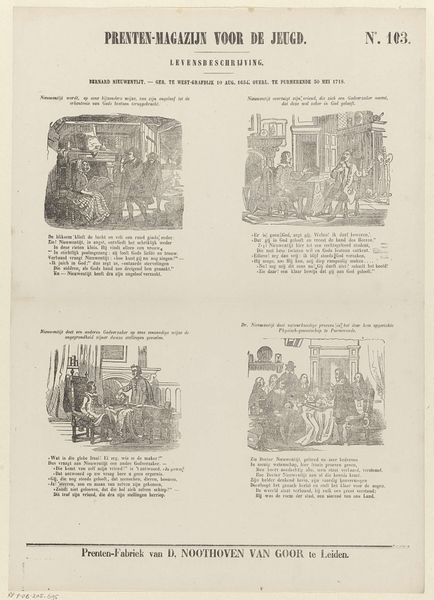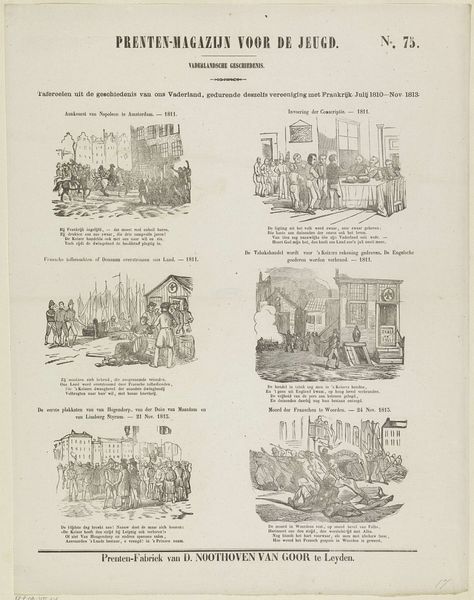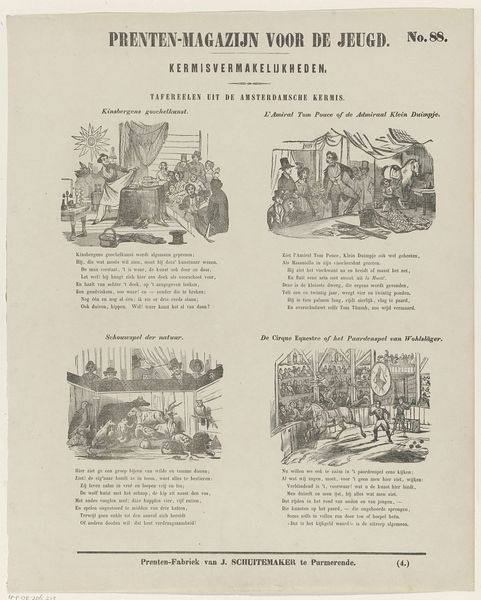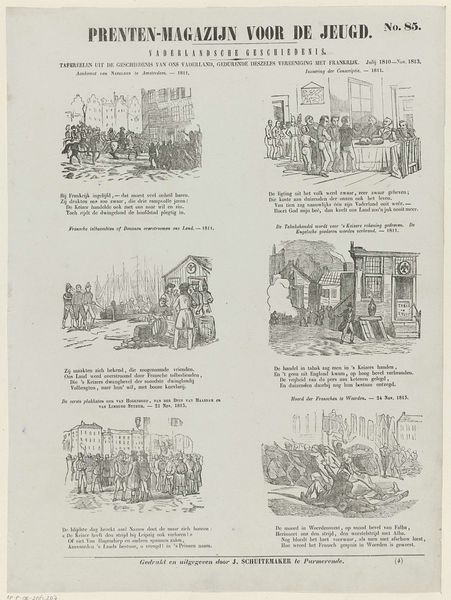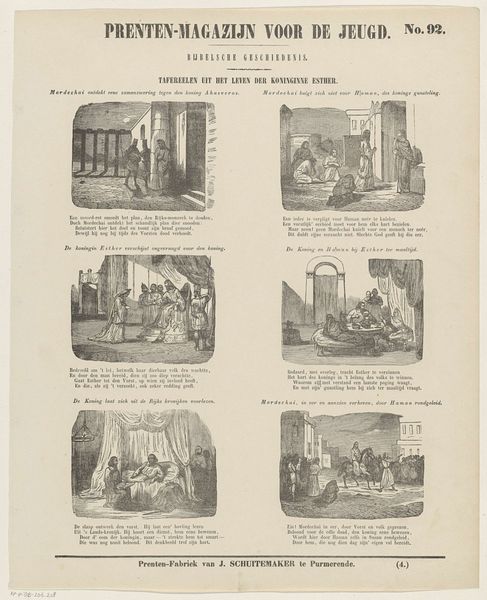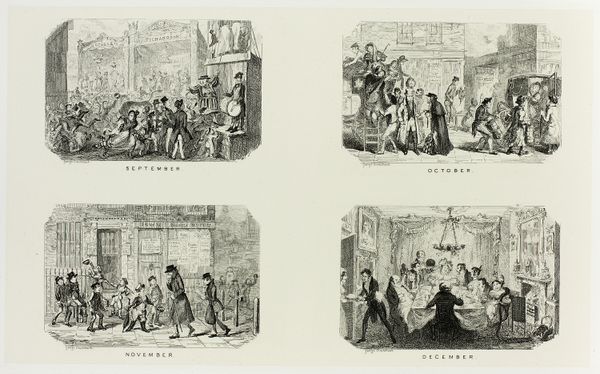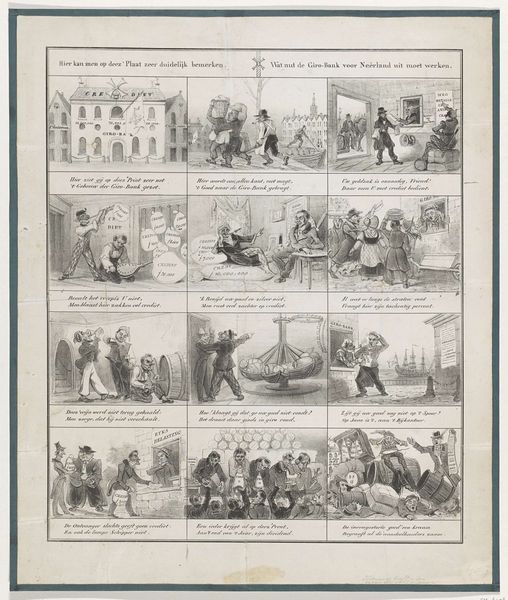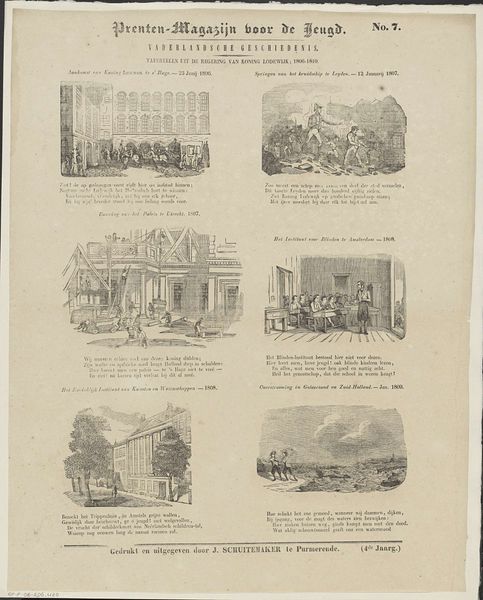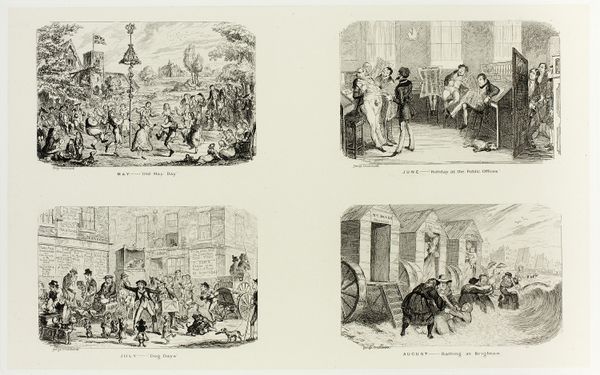
graphic-art, print, engraving
#
graphic-art
#
narrative-art
# print
#
cityscape
#
engraving
Dimensions: height 400 mm, width 530 mm
Copyright: Rijks Museum: Open Domain
Editor: This is "Spotprent op een verordening in Utrecht op het bouwen en slopen, 1857," a print, likely an engraving, made anonymously. It's a grid of small scenes. It strikes me as a commentary, maybe a humorous one, on regulations. What kind of story do you see unfolding here, particularly regarding the public perception of such rules at the time? Curator: This piece gives us a glimpse into the social and political climate surrounding urban development in 19th-century Utrecht. As a satire, it probably reflects public sentiment – perhaps frustration or skepticism – toward new building regulations. Notice how each scene depicts different aspects of these rules. What seems to be the main point of contention, do you think? Is it bureaucratic inefficiency, excessive control, or something else? Editor: It seems to be poking fun at the different layers of bureaucracy. There are scenes of committees, approvals, even inspectors. I guess people felt overwhelmed by it all? Curator: Precisely! And that’s where the power of this kind of visual commentary lies. It captures a mood of resistance, or at least weary resignation. It's a form of public discourse, using imagery to voice opinions on governance. Considering the format—a print—how might this impact its reach and influence within Utrecht society? Editor: Being a print, it would be relatively easy to distribute, making the commentary accessible to a wide audience beyond just the elite or those directly involved in construction. A visual meme, almost? Curator: In a way, yes. It's fascinating how artists throughout history have used printmaking to engage in social and political dialogues, influencing public perception and even policy. Has analyzing this print shifted your initial perspective on it? Editor: Definitely. I saw humor and a commentary on rules, but now I understand the context: it’s a public voice reacting to the changing urban landscape and the power structures behind it. Thanks! Curator: My pleasure. These seemingly simple images often hold a mirror to the anxieties and aspirations of a society.
Comments
No comments
Be the first to comment and join the conversation on the ultimate creative platform.
